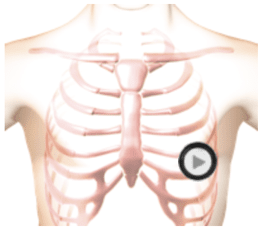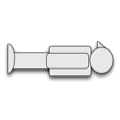Hypertrophic Cardiomyopathy - Auscultation Lesson
Listen


The patient's position is supine.
Visualize
Observe
Observing the animation, you can see that the contraction of the left ventricle is strong and occurs in a reduced amount of time. Anatomically, the septal wall is very much thicker than the rest of the ventricle, but this is not shown in the animation.